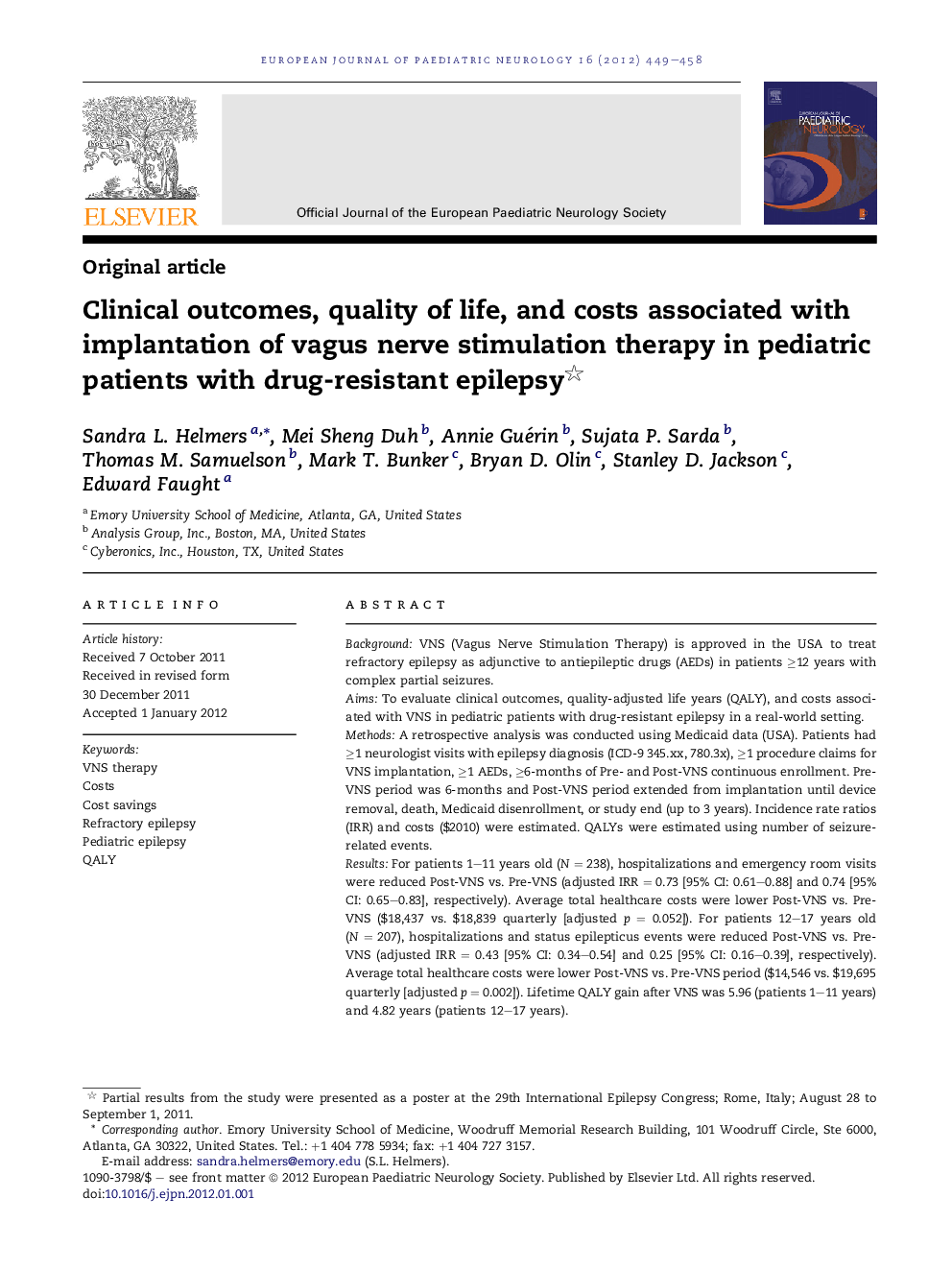| Article ID | Journal | Published Year | Pages | File Type |
|---|---|---|---|---|
| 3054263 | European Journal of Paediatric Neurology | 2012 | 10 Pages |
BackgroundVNS (Vagus Nerve Stimulation Therapy) is approved in the USA to treat refractory epilepsy as adjunctive to antiepileptic drugs (AEDs) in patients ≥12 years with complex partial seizures.AimsTo evaluate clinical outcomes, quality-adjusted life years (QALY), and costs associated with VNS in pediatric patients with drug-resistant epilepsy in a real-world setting.MethodsA retrospective analysis was conducted using Medicaid data (USA). Patients had ≥1 neurologist visits with epilepsy diagnosis (ICD-9 345.xx, 780.3x), ≥1 procedure claims for VNS implantation, ≥1 AEDs, ≥6-months of Pre- and Post-VNS continuous enrollment. Pre-VNS period was 6-months and Post-VNS period extended from implantation until device removal, death, Medicaid disenrollment, or study end (up to 3 years). Incidence rate ratios (IRR) and costs ($2010) were estimated. QALYs were estimated using number of seizure-related events.ResultsFor patients 1–11 years old (N = 238), hospitalizations and emergency room visits were reduced Post-VNS vs. Pre-VNS (adjusted IRR = 0.73 [95% CI: 0.61–0.88] and 0.74 [95% CI: 0.65–0.83], respectively). Average total healthcare costs were lower Post-VNS vs. Pre-VNS ($18,437 vs. $18,839 quarterly [adjusted p = 0.052]). For patients 12–17 years old (N = 207), hospitalizations and status epilepticus events were reduced Post-VNS vs. Pre-VNS (adjusted IRR = 0.43 [95% CI: 0.34–0.54] and 0.25 [95% CI: 0.16–0.39], respectively). Average total healthcare costs were lower Post-VNS vs. Pre-VNS period ($14,546 vs. $19,695 quarterly [adjusted p = 0.002]). Lifetime QALY gain after VNS was 5.96 (patients 1–11 years) and 4.82 years (patients 12–17 years).ConclusionsVNS in pediatric patients is associated with decreased resource use and epilepsy-related events, cost savings, and QALY gain.
